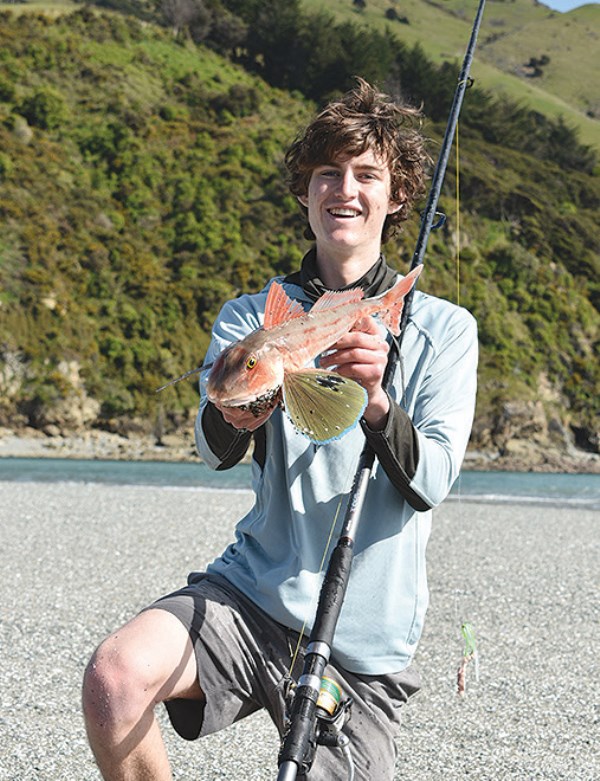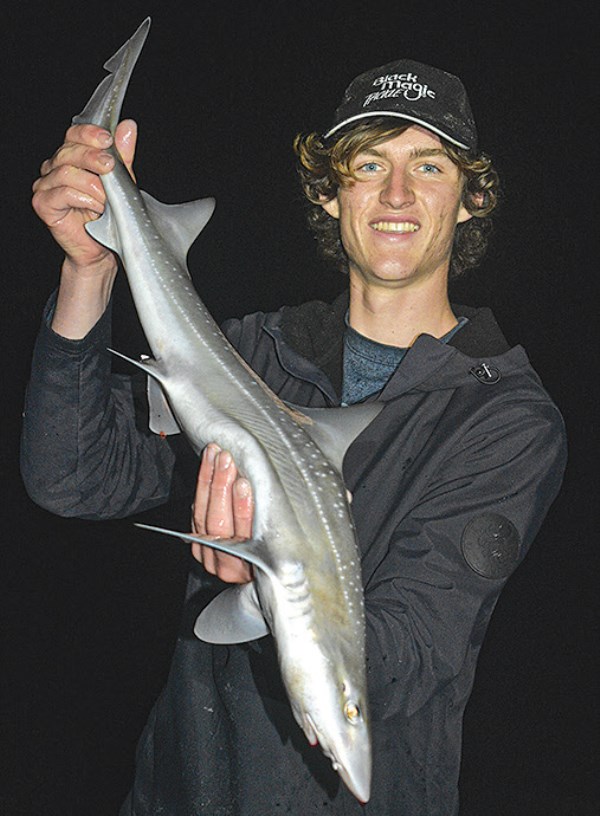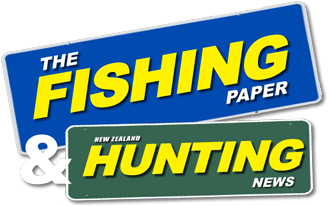
The Fishing Paper: What is your first memory of fishing?
Sam: My first memory of fishing was casting lines off the rocks in Cornwall, England, when I was very small in the hopes of catching pollock, mackerel or bass.
TFP: What stages have you passed through on your fishing journey?
Sam: Since I first started fishing I’ve been at just about every stage of obsession; for several years I was never particularly fond of it and actually disliked fishing but since moving to New Zealand my love for fishing has quickly blossomed into an addiction!
TFP: What has been your most successful day surfcasting?
Sam: My most successful day surfcasting was definitely catching an 11 pound snapper off the rocks in Nelson, proof that I now knew at least partially what I was doing. I had chosen the appropriate spot for the stage of tide, used the right rig and tackle and presented my bait in the correct way to land an absolute beauty of a snapper in the top of the South Island!
TFP: What is your most favoured rig for surfcasting?
Sam: My favourite rig that works for almost all situations is a ledger rig. I prefer to make my own using 50 lb leader with two lines branching off the mainline with around 4/0 hooks in either circle or J hook fashion depending on the conditions and bait I’m using.

TFP: What brand of rod and reel do you favour?
Sam: I don’t have much preference for brand but most of my gear is Shimano, my favourite piece of gear has to be my Baitrunner, which is highly versatile. Other than that, I’m not particularly fussy.
TFP: What baits do you mainly use for surfcasting?
Sam: For surfcasting I use whatever baits I have readily available to me but this also depends on what species I’m targeting; for snapper, kahawai, gurnard or cod I tend to just use petrol station bait such as squid or anchovies. However, if I’m targeting rig, moki or in certain locations where spiny dogs can be a plague, I’ll use paddle crabs or shellfish such as mussels
TFP: What is your top tip for surfcasting success?
Sam: Fish lots! For the most part it’s quite likely you won’t catch much until you find the right spot so testing new spots or even the same spots at different stages of the tide is vital to be a successful surfcaster! Don’t fish the same spot over and over again, you won’t learn anything.
TFP: Do you have favourite surfcasting spots and how do you fish these places?
Sam: I have several favourite surfcasting spots, one of which is an estuary mouth that requires some tricky tide navigating and often a bit of an adventure to reach. This particular spot has a steep drop off at the end of a vast plateau usually being beaten by swell. So I will wade out along the plateau through the surf until I can cast my baits out into the drop off—finding this drop off was just a case of reading the surf. Spotting the lulls in waves can tell you a lot about the depth and seabed.
I like to use a mix of oily baits and shellfish as it often produces gurnard and the occasional rig, as well as frequent kahawai! Each of my fishing spot requires slightly different techniques, which I’ve learnt from putting time into my fishing and that’s the best advice I can offer!
TFP: What other forms of fishing do you pursue?
Sam: I pursue essentially all other types of fishing I can: spearfishing, boat fishing and trout fishing. Each of these types of fishing teach me a little bit more about fish behaviour and techniques I can apply to surfcasting!
TFP: Besides fishing, what else do you like to do in the outdoors?
Sam: I’m a keen skier, hunter when I get the chance, tramper, mountain biker and climber.
TFP: What do you think of the present state of the Nelson, Tasman Bay fishery?
Sam: The Tasman bay fishery is a very unique fishery that is very new to me. Fishing the bay frequently has taught me it is highly changeable, one day can produce large fish and lots of them whilst the next can result in disappointment. Because of this, it can be hard to judge the state of the fishery but, from what I’ve heard and read, it seems to be getting better and, with that in mind, I hope it continues to get healthier!













